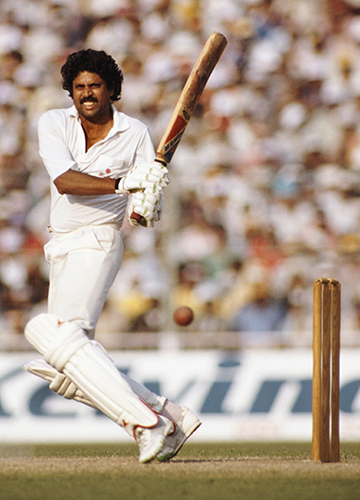India beat Bangladesh by a whopping 280 runs in the first Test in Chennai, but it is moot if the victory would have been so facile without stellar contributions from all-rounders Ravichandran Ashwin and Ravindra Jadeja.
India were 144-6 in the first innings before the two put on 199 runs to take the team to a strong 376. From there on, they switched on their formidable spin-bowling skills to seal the issue.
In India’s imposing home record (17 Test series wins on the trot before the current Bangladesh one), this duo has played a crucial role. However, what makes the Ashwin-Jadeja tandem fascinating is that both are spinners in the same team. Generally, as the history of Test cricket shows, when a team has had more than one high-quality all-rounder, it has been two quicks who can bat, or a fast bowler and a spinner who can wield the willow.
Scrolling down teams with two or more fast bowling all-rounders since World War II, here is what we find. Bradman’s Invincibles had Keith Miller and Ray Lindwall, South Africa in the late 1960s and 70s had Eddie Barlow and Mike Procter, the West Indies in the late 1950s and early 60s had Garfield Sobers (who could bowl all styles) and Frank Worrell, Pakistan in the 1980s had Imran Khan and Wasim Akram, and New Zealand had Richard Hadlee and Lance Cairns in the same period. In the 1990s and 2000s, South Africa had Jacques Kallis, Shaun Pollock and Lance Klusener.
As for teams boasting a fast bowling and a spin all-rounder, there was Richie Benaud and Alan Davidson (Australia), Kapil Dev and Ravi Shastri (India), Imran Khan and Mushtaq Mohammad (Pakistan), Chris Cairns and Daniel Vettori (New Zealand), and Sanath Jayasuriya and Chaminda Vaas (Sri Lanka).
But the list of teams having more than one world-class spin bowling all-rounder is meagre. Fred Titmus and Ray Illingworth for England, Intikhab Alam and Mushtaq Mohammad in the same period for Pakistan, and currently, Shakib Al Hasan and Mehidy Hasan Miraz for Bangladesh are the names that come to mind. And none from this list comes even close to Ashwin and Jadeja, statistically.
Ashwin has 522 wickets, 3,000-plus runs and six Test centuries. Jadeja, in 28 fewer Tests, has 299 wickets, 3,000-plus runs and four Test centuries. These stats put them in the upper echelons of Test cricket all-rounders. So, where would Ashwin and Jadeja stand among Indian all-rounders?
In all such debates involving players and their performances from different eras, reaching a hard conclusion is near impossible.
Playing conditions―pitches, weather―can differ drastically from time to time. Playing at home or away has crucial impact on performances, as does quality of opponents.
That said, consistency in performance over an extended period of time, supported by impressive stats, provides the best index to the calibre of a player.
By this yardstick, both Ashwin and Jadeja hurdle over several Indian all-rounders. Their sheer body of work overwhelms that of Madan Lal, Roger Binny and Mohinder Amarnath, who left their impress in the 1980s; Eknath Solkar and Abid Ali in the 1970s; Salim Durani, Chandu Borde, Bapu Nadkarni and Rusi Surti in the 1960s; and if I have to go further back, Lala Amarnath, Dattu Phadkar, Vijay Hazare and Polly Umrigar, the premier all-rounders in the 1940s and 50s.
Yet, it’s not a cakewalk for Ashwin and Jadeja. Having overhauled those mentioned above, they run into two major stumbling blocks: Vinoo Mankad and Kapil Dev.
Mankad was India’s foremost cricketer in the late 1940s and through most of the next decade. A wily left-arm spinner who could bat at the top or in the middle order, he has left behind a litany of outstanding performances that gave Indian cricket heft and stature.
Mankad’s career stats might not seem as imposing today. In 44 Tests, he scored 2,109 runs and took 162 wickets. But, in Australia in 1947-48, Don Bradman lauded him for his all-round skills and competitiveness.
In 1951-52, Mankad was the architect of India’s maiden Test victory, over England in Madras, claiming 12 wickets.
He was India’s leading player against Pakistan the next season, scoring 129 runs and taking 25 wickets to help India beat their arch-rivals in the first contest after partition.
In 1956, against New Zealand in Madras, Mankad and Pankaj Roy put on 413 for the first wicket, then a world record, with the former scoring 231.
Mankad’s best performance came against England at Lord’s in 1952 when he scored 256 runs and took five wickets. That match has gone down in history as Mankad’s Test.
Kapil Dev arrived like a hurricane three decades later, in 1978, to challenge Mankad as the country’s best all-rounder. India had been starved of fast bowlers since the days of Mohammed Nissar and Amar Singh in the 1930s. The 19-year-old from Haryana was seen as the answer to decades of fervent prayers.
Over the next 15 years, Kapil was to establish himself as an all-time great, showing superb bowling skills, with new ball and old, dashing batsmanship, and brilliant fielding. Kapil became India’s main, if not only, match-winner for most of this period.
Kapil’s record is stupendous. He scored more than 5,000 Test runs, including eight centuries, three of them overseas. He also took 434 wickets (a world record when he retired), and once hit four successive sixes off Eddie Hemmings at Lord’s to help avoid a follow-on.
His most memorable performance came, of course, in a different format, in the 1983 World Cup. Winning the tournament gave Indian cricket a massive fillip and put Kapil on a pedestal. One that he still occupies.



